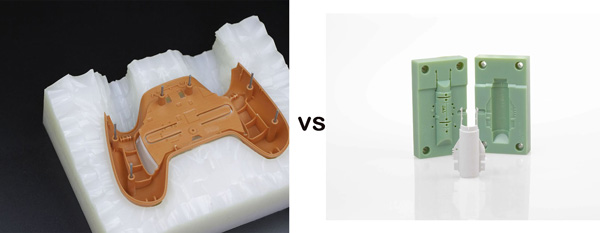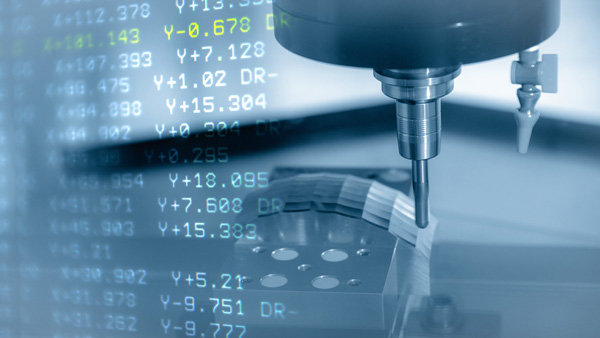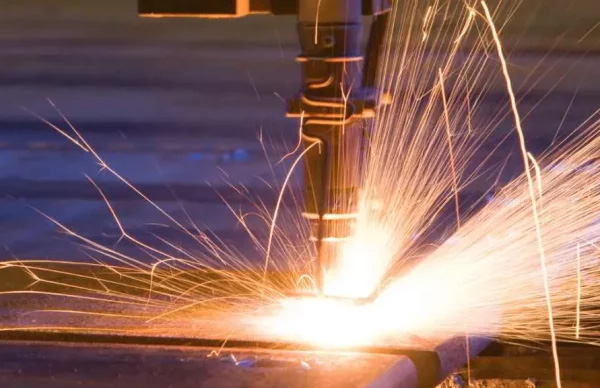Whether it’s lengthy wait periods, costly treatments, or generic medical devices that don’t fit properly, all these issues are now being solved with the introduction of 3D printing in medicine. Everything is changing from the processes involved in surgical planning to the creation of implants.
With this novel technology, healthcare professionals are better able to give you the personalised care that you deserve. In this blog, we will discuss how 3D printing in medicine transforms health services and its implications for patients. Stay connected!
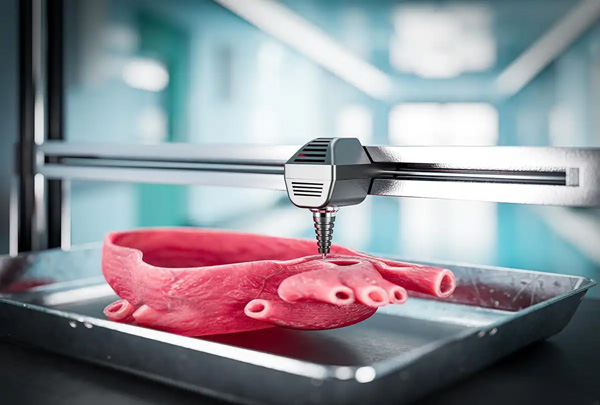
1) What is 3D Printing in Medicine
The journey of incorporating 3D printing into medicine began as far back as the early ’90s when some pioneers started attempting to print basic body parts using specialised materials. While it was a concept too ahead of its time, advancements over the years have been immense, and this technology continues to evolve swiftly.
Well, medical 3D printing is now used for diverse purposes such as the creation of prostheses and surgical practice on printed organ models. The ability to 3D print a model allows the formation of application-specific items, offering personalised treatment.
The capturing scans, MRIs, CT images, and similar examinations provide data for construction and are turned into tangible figures with the help of software, which prints them layer by layer digitally. And, manufacturing custom parts reduces both time and money, while most importantly improving results.
With time, expect more dental implants, surgical tools, and bone structures to be printed in different hospitals since more clinics are realising the advantages of 3D printing technology.
Apart from this, research oriented toward the future is being conducted on chronic structures like tissues, blood vessels, or even organs, which formulates greater hope for expansion in medical uses of 3D printers.
2) The working of 3D Printing in Medicine?
How is 3D printing being used in medicine? In the medical field, devices and models of anatomy can be produced using 3D printers. First, a doctor uses an MRI scan, CT, or X-ray to obtain data. This data undergoes processing through software, and a three-dimensional model is created with accuracy to its dimensions and structure.
After completion of the model, it is necessary to deliver it to the printer. At this point, everything must be built out of plastic or resin, metals, etc. It will construct a bone slice gradually from layers, stratum after stratum (additive manufacturing).
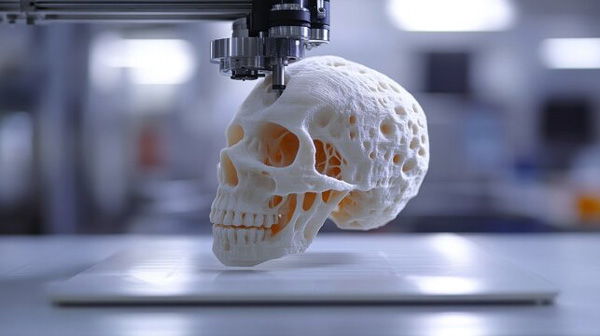
Finally, with printed bone substitutes, CAD CAM implantable parts, surgical instruments, as well as hearing aids, are manufactured to exact patient size features, which suit individual needs. Moreover, some medical practitioners utilise organ practice variants such that precise strategies can be formulated, identifying key areas before using a scalpel.
Enhanced Personalisation is now possible due to innovations made with 3D printing technology.
Note: An example of a special 3D printer is the bioprinter, which can print with living cells. This technology has not yet fully matured, but it holds promise for the future in areas such as printing tissues or even organs.
3) What are the Applications of 3D Printing in Medicine
The introduction of medical 3D printing has transformed the treatment landscape, enabling more efficient and economical care. Below are some notable 3D printing applications in medicine.
- Custom-Made Prosthetics
Prosthetic limbs can now be made to fit individual users perfectly thanks to 3d printing. The old-fashioned way of making and fitting prosthetics was time-consuming and very expensive. It is now possible for lighter, cheaper and better-fitting prosthetics to be produced within days instead of using modern techniques such as 3D printing.
- Surgical Planning Models
For intricate surgeries, doctors routinely do prep work by practising on the patient’s body parts printed in three dimensions from CT or MRI scans. These preoperative models help to decrease risks associated with complex operations while increasing overall accuracy, which is essential for successful outcomes during surgery.
- Dental Restoration Equipment and Tools
A dentist can create crowns, bridges, aligners, and dentures using 3D printers. Since these dental tools are printed after taking a scan of the patient’s mouth, they fit perfectly. This is much more convenient compared to other older methods of dentistry.
- Tailor-Made Body Implants
Well, Doctors can now order tailor-made bone plates or hip implants for patients. These body parts are made surgically with inbuilt anatomy recognition systems. Therefore, it helps in improving comfort during replacement surgery as well as leading to reduced inaccuracies and post-surgery recovery time.
- Orthopaedic supports such as Braces
Braces, splints, casts, and orthopaedic devices are proven to have breathability that is not found in other normal orthopaedics.
- Tissue Bioprinting (Research Form)
Bioprinting is still an emerging field where the aim is tissue reproduction with living beings’ cells. It is among the most promising fields of 3D shaping and medical science since it may one day allow physicians to manufacture skin for burn patients or trans plants organs requiring surgical replacement.
- Anatomical Education and Training
Hands-on training sessions for medical students include the use of 3D-printed body parts. The models provide a safe, low-cost alternative to practising on real patients and offer an enhanced experience compared to looking at screens.
- Surgical Instruments and Tools
Alright! Some important surgical tools like forceps, clamps, and even scalpel handles can be designed using 3D printing and medical technology. And, it makes it more convenient not only in remote areas but also in urgent situations when standard equipment is unavailable. These tools are beneficial in emergencies due to how quickly they can be customised to suit the surgeon’s requirements.
4) Advantages and Disadvantages having 3D Printing in Medicine
No doubt, 3D Printer Technology brought extraordinary advantages in the use of slicing devices in medicine. However, this technology also has some challenges. Let’s explore 3D printing pros and cons.
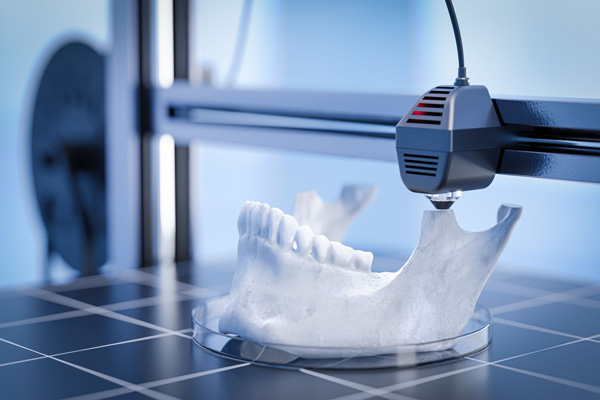
Benefits Of A 3D Printer In Medicine
+ Personalised Treatment: As compared to prior methods, medical doctors have the capacity to design particular devices, including prosthetics, based on the individual’s anatomical structure, hence promoting convenience.
+ Quicker Manufacturing: Prosthetics created using conventional methods take weeks to manufacture. 3D printing greatly enhances this timeline. Well, in some unique situations, devices can be produced in a matter of hours or days, which is very helpful in urgent situations.
+ Reduced Pricing: With 3D printing, there is less work required and fewer materials. This lowers the pricing of surgical tools, prosthetic limbs, and implants, which aids hospitals and patients economically.
+ Better Surgical Planning: Improved Preparation for Surgery models of your organs can now be printed out for doctors to study prior to conducting surgeries on you.
+ Advancements in Medicine: This field can benefit from bioprinting tissue with cells. It will also be possible to 3D print tissues such as skin, blood vessels, or even transplantable organs.
Disadvantages of 3D Printing in healthcare field
– Expensive Upfront Investment: If we pay attention only to the gains of 3D printing in the medical field, we will be ignoring its high upkeep costs. Small clinics may find these costs a hurdle.
– Narrow Variety: It’s currently impossible to create every part using 3D printers because certain organs need further technology that can produce flexible materials.
– Regulatory Challenges: Every medical device created requires meeting safety standards. Apart from this, the approval pathway for 3D printed devices is often lengthy, hindering timely access for patients.
– Skilled Workforce Needed: The model or implant to be printed must undergo an accurate specification process through specialised training by physicians and technicians.
5) Fast and Reliable 3D Printing Services for Healthcare
In the healthcare industry, precision and efficiency are essential requirements, and that’s exactly why Koonze Model serves as a reliable third-party provider in the sphere of medical manufacturing.
Koonze meets your medical needs by providing precision surgical instruments, including tailored surgical guides and implants designed specifically for individual patients.
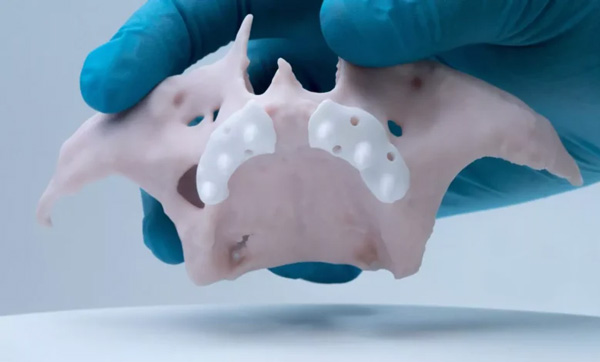
- 3D printing technologies
Koonze leverages its extensive proficiency in rapid prototyping and additive manufacturing within the medical sector through advanced 3D printing technologies such as SLA, SLS, FDM, and MJF. These techniques yield superior accuracy coupled with an exceptional surface finish, which is vital when dealing with strict regulatory standards to manufacture medical parts.
Koonze produces detailed anatomical models together with other intricate orthopaedic devices while still adhering to rigorous quality benchmarks.
- Speed of Production
Koonze Model is one of the few manufacturers around that manufactures custom medical parts with remarkable speed. Receiving components on time is crucial for many healthcare professionals, especially when dealing with urgent care and surgery preparations.
Koonze offers to send you components within days at a notable quality level, and our production cycles do not disappoint.
- Material selection
Koonze aids healthcare providers in specialised material selection falling under biocompatibility or sterilisation by offering advisory roles through our exceptional customer service.
Koonze Model remains unmatched in the accuracy, timing and precision needed for work done in the medical field, which makes them an excellent partner to collaborate with. Our intuitive online submission system makes it easy to kick off projects and can be accessed through the site www.koonze-rapid.com.
And, to avail our customised 3D printing services, get a quote from Koonze right now!
6) 3D Printing Materials and 3D Printers Used in Healthcare
In the medical field, two particular factors determine the effectiveness of 3D printing: specific materials and specific machines. It is important that printed parts are both safe to use and accurate in strength measurement for healthcare.
Common 3D Printing Materials in Medicine
Printers must use biocompatible materials that will not cause damage when in contact with human skin. Here are some widely used options:
- PLA (Polylactic Acid): A very accessible plastic used on educational tools and medical models. Though it has no application for internal use, it works well for external applications.
- ABS (Acrylonitrile Butadiene Styrene): Known for strength and toughness, often used for prosthetics and braces.
- Nylon (PA12): Exceptional durability, flexible nature, makes it ideal for injection molded surgical tools as well as surgical clothing.
- Resins: Applied in SLA printers to produce high-detail dental models, along with hearing aids and surgical guides.
- PEEK (Polyether ether ketone): Used to make high-performance plastics intended for implants as well as long-term internal body usage.
- Titanium and Stainless Steel: Employed medically for bone implants, joint replacements, alongside dental posts.
Every single one of these products has its own advantages during application and device configuration, or model design drives material selection.
Common 3D Printers in Medicine
Three-dimensional technologies for printing are applied in medicine by considering factors such as precision, time efficiency, and material-working capability:
- FDM (Fused Deposition Modeling): Most suitable for low-cost prototypes, split braces and orthotic devices.
- SLA (Stereolithography): Very effective in producing highly accurate models, especially in the dental and surgical fields.
- SLS (Selective Laser Sintering): Done for strong functional parts such as orthopaedic prostheses and surgical instruments.
- MJF (Multi Jet Fusion): Serves fine surface finishing for certain medical wearables and also some implants.
- DMLS (Direct Metal Laser Sintering): Best utilised at industrial levels for the production of metal components like titanium bone implants.
Each type adds value to the processes involved in medical 3D printing based on criteria such as speed, accuracy, flexibility, and durability, among others.
Surgeons can design customised surgical guides or even anatomical models tailored to specific patients using advanced materials through 3D printing techniques. So, implants can then be produced efficiently regarding both time and safety.
7) The Future Possibilities of 3D Printing in Medicine
What is the future of 3D printing in medicine? Advancements in technology continue to fuel innovation within this area. We look forward to treating patients in better ways with the increasing availability of automated systems dedicated to 3D-based subsystems.
- Bioprinting: Printing Tissues and Organs
Bioprinting is a rapidly evolving field that focuses on utilising living cells to create tissue structures. Currently, researchers are developing skin grafts for burn victims as well as cartilage implants for joints. Even miniature organs that can be used to test medicines are in the works.
In the distant future, we may have the ability to print full organs like kidneys or hearts, which could significantly help reduce organ donor requirements.
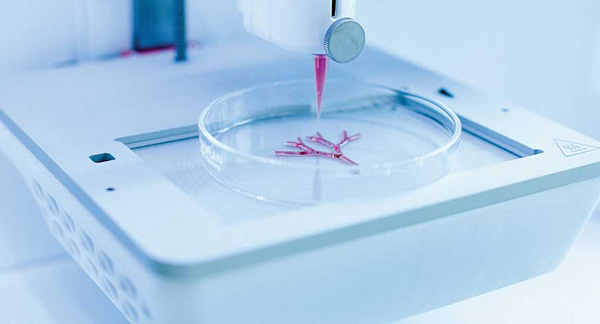
- Personalized Medicine
With MRI scans and advanced imaging technologies, doctors can now tailor specific dental devices, surgical guides, and even body implants, creating a replica of the patient’s anatomy. This advancement provides enhanced levels of comfort and aids in faster recovery, making it far more beneficial for the patient.
- Remote Healthcare Solutions
Doctors could use portable 3D printers while working in remote regions. These small 3D printing machines would serve as multifunctional tools that create parts and medical tools instantly upon demand, eliminating waiting time for order deliveries.
- Better Regulation and Trust
With the growing use of 3D printing in clinics and hospitals, we expect an increase in regulations set forth and quality audits performed, assuring safety procedures. Thus, it improves trusted care for both patients and healthcare personnel.
8) Conclusion
All in all, with 3D printing in medicine, the ways physicians manage, treat, and attend to patients have changed. It enables quicker surgeries as well as tailor-made tools and devices, which increase accuracy and efficiency.
Well, if quality and good service are your priorities, trusting a reliable service provider like Koonze is the best choice ever. We will make the process easy for you from start to end! Just contact us right now!


